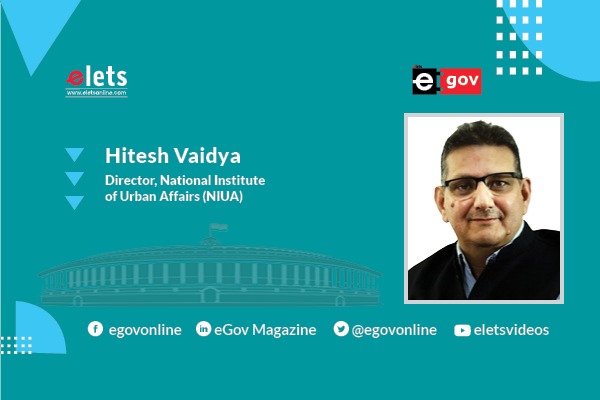
The SDG 11 is an ambitious agenda with the aim to move towards more sustainable, inclusive and resilient cities. It is the standalone urban goal that firmly places urbanisation at the forefront of policy attention. The goal highlights that cities have an explicit role to play in enabling sustainable development, writes Hitesh Vaidya, Director, National Institute of Urban Affairs (NIUA).
SDG 11 consisting of 10 sub-goals, is most relevant for shaping and functioning future cities. It seeks to make cities and human settlements inclusive, safe, resilient and sustainable through eliminating slum-like conditions, providing fossil-fuel-free transportation, increasing participation of people in urban governance, enhancing cultural and heritage preservation, addressing urban resilience and climate change challenges, better management of urban environments (pollution and waste management), and providing access to safe and secure public spaces for all.
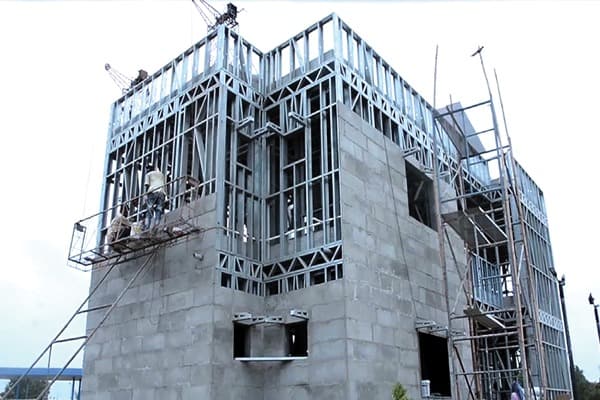
Lighthouse Project under GHTC
The National Institute of Urban Affairs (NIUA) and eGov magazine have collaborated to raise awareness, inform, recognise, celebrate, and share successes through bringing out a special series focusing on SDG 11. The focus of the findings and opinions in the articles of this special series has been towards the localisation of SDG 11— the process of defining, implementing and monitoring strategies at the local level for achieving sustainable development goals and targets.

Main Messages From SDG 11 Series
72 articles and seven interviews have been covered in this special series of SDG 11 authored by representatives from city governments, academia, planning institutions, governments, multilateral organisations, think tanks, and civil societies. The views and opinions expressed in the articles are inclined towards enabling a bottom-up, participatory, and inclusive approach in mobilising SDG 11 at the local level. The overall message from the issues highlighted that there are policies and programmes formulated both at the national and state levels aligned with the SDG 11 sub-goals and indicators. However, a robust mechanism to effectively align the national agenda with the local level is limited. The main messages from the SDG 11 series are summarised below:

Affordable Housing: India has made considerable progress on SDG 11.1. The two flagship missions—Pradhan Mantri Awas Yojana (PMAY) and Swachch Bharat Mission— have adequately addressed the goals to build affordable housing units and provide basic sanitation facilities to all across the country.
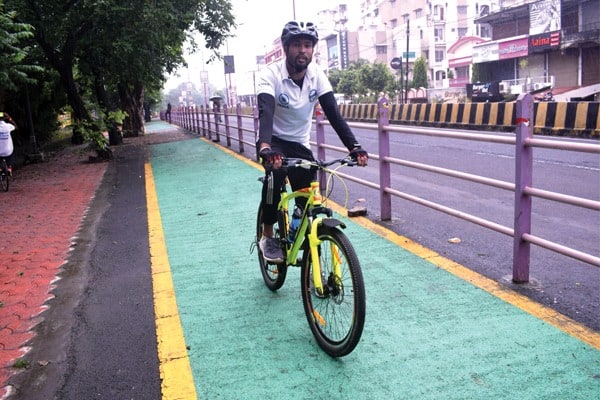
Non-motorised corridor at Jabalpur
However, the path towards the localisation of SDG 11.1 in the country is challenging. There is a need to focus more on inclusive housing policies, green building technologies, and innovative housing finance mechanisms. The SDG 11.1 does not define adequate housing and its criteria, which is necessary to measure the progress in the number and coverage of housing units at the local levels and to provide a cross-cities assessment. A more focused policy approach is required for small and medium-sized towns, census towns, and slums, especially the challenges thrown up during the pandemic. Incentivising the real-estate and construction industry, developing PPP models for housing, and increasing access to low-cost housing technologies are some other measures that need to be adopted for providing affordable housing for all.
Sustainable Transport: To achieve a sustainable transportation system in India requires major policy shifts and innovations in transport plans and regularly updating the mobility-related data. While there are high-cost infrastructure projects such as national highways, roads and bridges, pedestrian-friendly streets, LED lighting, etc., aggressive efforts to ensure a holistic approach to urban mobility planning are required. There is a need to develop a clear data collection and management structure. Protocols for collecting time-series data, including collection methodologies, frequency of collection, and a harmonised definition of each data item are required for long-term investments in the transport sector.
Sustainable Urbanisation: SDG 11.3 covers sustainable urbanisation, the most important goal among SDG 11 which focuses on sustainable and inclusive development of cities. Sustainable urbanisation has been the overarching goal in the country’s national programmes and policies. In this regard, the Government of India’s national policies, missions, and programmes—Smart Cities Mission, Atal Mission for Rejuvenation of Urban Transformation (AMRUT), Swachh Bharat Mission-Urban, Pradhan Mantri Awas Yojana-Urban, DAY-NULM, and Rurban Mission—are the key ones consistent with the national goals. The set of reforms that are integral to the government’s mission includes improving governance, making municipalities fiscally robust, bringing in optimal use of land and building capacities of the urban local body officials.
At the national level, NITI Aayog is the nodal agency responsible for the monitoring of SDGs in India. While the National Indicator Framework (NIF) prepared by NITI Aayog has been adopted by the states for making progress towards achieving SDGs, the process is challenging. Awareness generation and capacity building for the local bodies in all the aspects of localisation is very important. There is a need to create cross-learning culture by generating a knowledge repository on the best practices and peer-learnings. Collection of updated data and reporting along with statistical indices, geospatial data analytics and big data are required to create a data ecosystem to make NIF extremely dynamic.
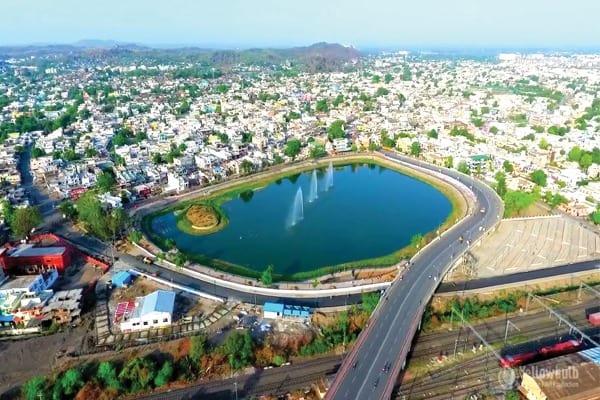
Beautification and Redevelopment of Gulava Talao in Jabalpur
Cultural Heritage & Urbanisation: The cultural heritage of cities plays a pivotal role in steering economic growth. Both tangible heritage and intangible culture and heritage provide a boost to the tourism industry which brings investment and promotes social cohesion, inclusion and equity. The centre and state-level bodies have accorded their attention to monuments and sites of national and regional significance. However, there is an inadequate agency within institutions, particularly urban local bodies and community-based organisations or community groups, to engage with the heritage of local significance. Inclusive and participatory processes are necessary for the sustainable development of cities, based on the tourism industry. Such an integrated approach is possible only if the urban local bodies support the identification, protection and conservation of heritage through policies, plans, programmes and procedures. Partnerships between organisations and communities are critical to achieving a sustainable outcome, supported by measurable indicators for cultural heritage.
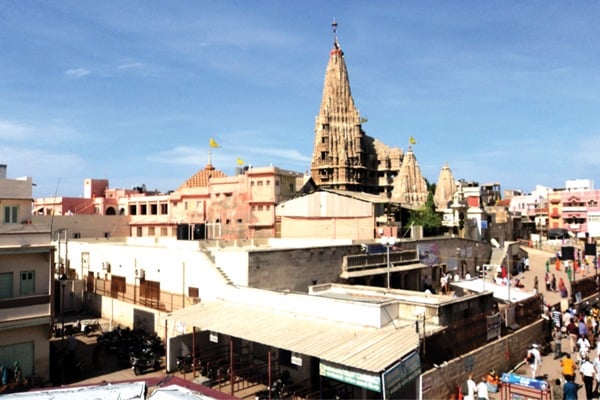
Dwarakadhish Temple in Gujara
Disaster Risk Reduction and Mitigation: With the increasing urban population, there are implications on green cover and biodiversity, energy consumption, transport sector, and water consumption, putting institutional capacities of cities under strain. In order to traverse through these contingencies, it is vital to develop scientific and innovative strategies for disaster risk reduction. It is imperative for authorities and all relevant stakeholders to minimise damage by identifying the potential risks, hazards and vulnerabilities, and providing prompt response to disasters when they strike. There is a need for multi-dimensional approaches to make our cities disaster-resilient through technological innovations, collaborations, co-creation, knowledge exchange and peer- to-peer learning among different stakeholders. Presently, the focus of national disaster policies and programmes is mostly on disaster management, emergency response or disaster recovery, rather than focusing on disaster prevention and mitigation are also considered as key priorities in the Sendai Framework for Disaster Risk Reduction (SFDRR). Therefore, there is a need to emphasise pre-disaster approaches, especially for urban resilience.
Disaster risk reduction and mitigation strategies also require legislative amendments in the country’s town and planning legislation to mainstream the disaster-risk reduction for the sustainable and resilient development of the country. There is the need for amendment in master plan area development rules. Planners should focus on land use zoning in hazard-prone areas and establishing techno- legal regimes. There is a need to incorporate safety requirements in building bye-laws of smaller urban local bodies and gram panchayats as well.
Managing Air Quality and Waste: Indian cities are presently dealing with the most serious environmental problems of air quality and waste management. There is no dearth of regulations in these sectors. The Government of India has taken several initiatives—SBM 1.0 & 2.0, Municipal Solid Waste Management Manual (2016), Smart Cities Mission, AMRUT, National Clean Air Programme—to control the issues of waste and air pollution. These initiatives have strengthened liquid and solid waste management and reduced the adverse per capita environmental impact on cities with people’s participation. However, the enforcement of law and implementation of strategies is a big concern. The limited capacity of pollution control boards and urban local bodies point to the need for technological reinforcement to address issues related to vigilance and enforcement. Institutional and budgetary capacities of the urban local bodies need to be strengthened to ensure the smooth implementation of plans for air quality and waste management. Additional technology-based solutions such as fleet modernisation strengthened inspection and maintenance systems, electrification of fleets and technology-based enforcement in industries will be required for air pollution control. For waste management, fiscal mechanisms and business models need to be developed to treat it as a resource and develop markets for its management.
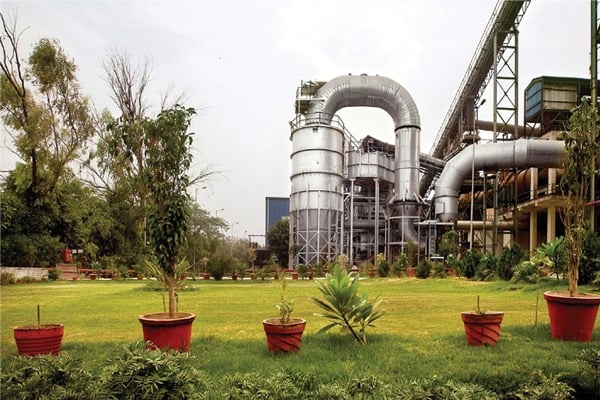
Waste-to-Energy plant in Ghazipur
Access to Green and Public Spaces: India’s path towards SDG 11.7 requires innovative solutions and proper implementation plans for increasing urban green cover in cities to achieve their SDG targets. Green cover and biodiversity emphasises conservation, rejuvenation and improving blue and green cover in the city that can play a critical role in addressing sustainability. It is important that cities should initiate step-by- step actions in pursuance of strengthening institutional coordination, following the aforementioned guidelines, initiating action plans or developing spatial databases to inform gaps, priority areas and monitoring the impacts of actions taken. Detailed spatial maps of open areas with attributes such as area, foliage cover, type of land, ownership of land, etc. can be developed to assess the current status of green cover. To strengthen the institutional coordination, it is imperative to ensure that the representatives from the town planning dept., development authority, PWD, civil society and community group representatives are included wherever possible, by the environmental cell/committees, horticulture or forest department within a ULB (responsible for increasing and maintaining the green cover). The cell should document the progress concerning activities undertaken to increase green cover.
SDGs 11.a, b and c: The last three sub-goals emphasises the need to establish stronger links between the urban and rural areas, increase the number of cities adopting and implementing integrated policies and plans towards inclusion, resource efficiency, mitigation and adaptation to climate change, resilience to disasters and support least developed countries, including through financial and technical assistance, in building sustainable and resilient buildings utilising local materials. These sub-goals highlight the need for national urban policies and regional development plans that responds to population dynamics, ensures integrated regional and territorial development and increase the local fiscal space.
The success of SDG 11 is directly related to the capacities of local governments to cater to sustainable, inclusive, and resilient urban development. The local governments are ultimately responsible for the delivery of services and development and can relate how the actions from the ground can support the achievement of SDG 11.
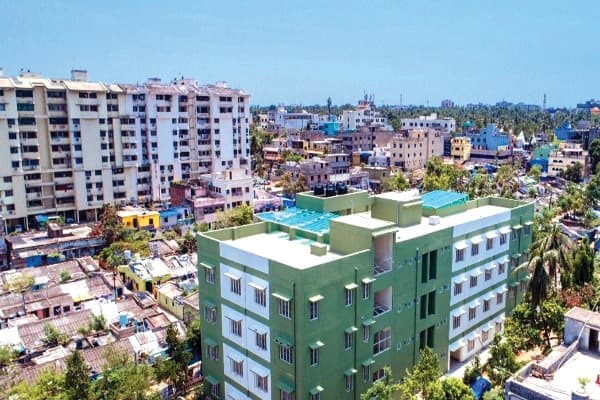
Social Equity Centre in Bhubaneswar
More Efforts Are Still Needed In Localising SDG 11
Localising SDG 11 is highly complex. It requires a strong focus on governance and long-term planning. The role of local governments is particularly important to enable the process of localising the SDGs. It is important that city governments should plan ahead and follow key steps which include defining a vision, prioritising actions, developing indicators, partnerships & collaborations, and training and capacity building.
Developing a vision is the key in the localisation process as it provides a desirable picture for the sustainable future of the city. The process of vision development should be inclusive and participatory and should include measurable targets. The local governments should take the ownership to formulate an ambitious, long-term, and creative vision including solutions to push the sustainable agenda forward.
Local governments are best placed to ensure that the needs of local people are understood and met. The local governments can make choices and prioritise the actions that best respond to the citizen’s needs. To effectively enable and implement this, local governments must conduct a needs assessment to define priorities, align
local and regional plans to SDGs, and mobilise local resources such as budget and financial strategies as per the local needs.
Aligning local plan and policies with SDGs require a well- established monitoring and evaluation framework with indicators to measure the progress. It is crucial that the local governments should adopt effective measurement systems, build on local disaggregated data and provide inputs to the monitoring efforts. This will also establish further actions to be taken on local policies. The statistical and planning offices should be an important part of monitoring and evaluation. The indicators also help in understanding the areas that still need to be developed.
Effective public participation, multi-stakeholder consultations and partnerships are the key features to localise SDG 11. It is through effective public participation schemes that local governments can truly reflect the voices and concerns of the people and communities, ultimately enabling local governments to truly localise the SDGs. It is, hence, important for the local governments to enable opportunities for the contribution from civil society organisations, the private sector, academia and other stakeholders in their actions on the SDGs.
Partnerships and collaborations can help identify the needs of local governments and provide them with capacity building and training opportunities, guidance to support the localisation of the SDGs.
Strengthening the localisation of the SDGs will allow the necessary transformation of local processes and structures towards accelerating the realisation of the global agenda. In this regard, local governments must be recognised as fundamental partners and supported accordingly in order to enable the implementation of the SDGs at the local level. As a way forward, new projects and activities should be developed to further assist and enhance the capacities of local governments towards the achievement of the SDG.
Be a part of Elets Collaborative Initiatives. Join Us for Upcoming Events and explore business opportunities. Like us on Facebook , connect with us on LinkedIn and follow us on Twitter, Instagram.











